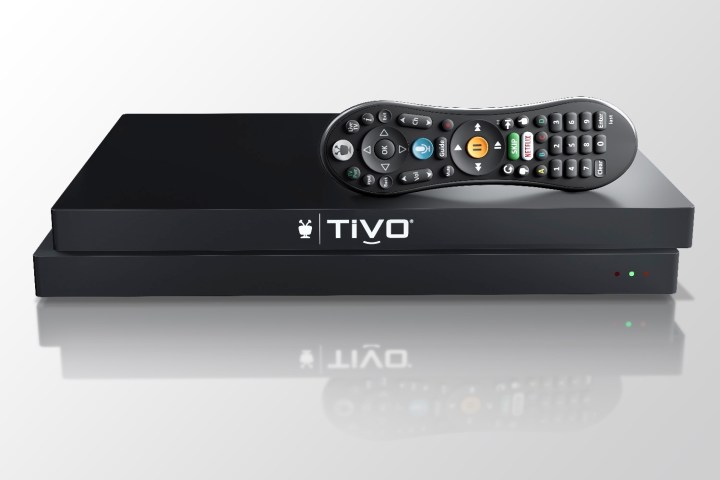
Surprise — TiVo is not dead. Well, not yet anyway. Confirming an earlier leak, the company has just announced two new models of its famous DVR. The $350 TiVo Edge for antenna and the $400 TiVo Edge for cable both carry the features that TiVo owners know and love like Skip Mode, OneSearch, and OnePass, but make things a bit more interesting by adding Dolby Vision HDR and Dolby Atmos to the mix. TiVo also took the wraps off its TiVo+ live TV streaming service which will be coming soon to all TiVo customers in the U.S.
The Edge DVRs are obviously more sophisticated than the TiVo Bolt DVRs that came before them. Those devices supported 4K and
Under the hood, the two Edge models are mostly identical. Both have the same generous 2TB storage capacity, which TiVo claims is good for about 300 hours of HD recording. The Edge for antenna has four discrete tuners, giving you the option to watch or record up to four shows simultaneously, while the Edge for cable gets six tuners. On-board is a wide variety of
At launch, Netflix, YouTube, Vudu, and Plex will offer
The TiVo+ live streaming service appears to be TiVo’s if-you-can’t-beat-them-join-them response to the overwhelming number of people who are cutting the cord and ditching DVRs in favor of streaming devices like the Amazon Fire TV or Roku. It’s a free, ad-supported collection of live streaming channels that will be familiar to those who keep track of these things: TMZ, Outside TV, PowerNation, FailArmy, Hell’s Kitchen | Kitchen Nightmares, Food52, and Ameba. TiVo has partnered with Jukin Media and Xumo to bring these streaming properties to its users — Xumo is the same company that powers live TV streaming on Panasonic and LG smart TVs, Comcast Xfinity Flex, and other devices. You’ll need an active TiVo membership to stream TiVo+.
The two new Edge DVRs need an active TiVo subscription to deliver most of their key features. For the Edge for antenna, that plan costs $7 per month or $70 per year, or $250 for a one-time, all-in plan. The cable version has a different set of prices: $15 per month or $150 per year, or $550 for a one-time, all-in plan.
The launch of these new DVRs also marks the official entry of TiVo into the Canadian market. Previously, Canadian consumers could buy TiVo DVRs from the U.S., and TiVo technology has been used in the DVRs marketed by select cable companies. TiVo will only be selling the Edge for antenna in Canada. A 500GB, two-tuner model will sell for $300 CAD, with fees of $9 per month or $90 annually. There is no all-in option.
Editors' Recommendations
- Your next car could have TiVo built-in
- TiVo takes personalization to the next level with voice ID
- The next-gen TiVo Edge DVR will provide 4K, Dolby Vision, and Dolby Atmos … eventually




